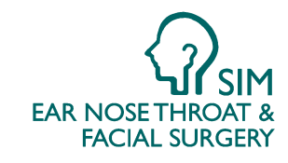Rhinoplasty Singapore

Why get a Nose Job / Rhinoplasty?
There are 2 main reasons why patients come to our clinic for a rhinoplasty:
- Change the appearance of the nose
- To clear a blocked nose
"Nose Job Singapore"
Nose jobs is Singapore are mainly to augment the nose e.g.
- Raise their nose bridge
- Sharpen the nasal trip
- Make the nose longer
- Make the nasal tip narrower
Surgery to make the nose smaller e.g. hump removal is much less common in Singapore compared to a Western population.
High Nose Bridge
The main consideration for raising a nose bridge is what implant to use. The 3 most common implants we see are:
- Silicone
- Goretex
- Rib cartilage
The commonest implant we come across is the silicone implant (shown in photo). It is hard and because of its size, it can raise the nose bridge quite high. It is easy to insert because it is hard. An incision can be made insider the nostril, and since it is hard, it can be shoved up the nostril.
It is also the implant that looks the most unnatural and damages the nasal tip cartilages the most. As the patient grows older, the overlying skin becomes thinner and the implant looks obvious. When you rub your nose, the entire implants moves. We have had to remove some silicone implants. During the surgery to remove it, we notice that there are usually is damage to the nasal tip cartilages because the hard implants has been pressing on it for too long.
These implants are popular due to the low price and advertisements claiming “scarless” surgeries. This is the implant that can be inserted without an external incision (discussed later)
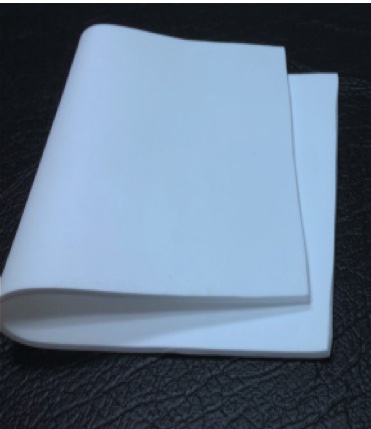
e-PTFE (Goretex) is a soft plastic that comes in 1mm thick sheets. 4 – 6 sheets are layered to create an implant. Goretex feels natural because it is soft. It has tiny pores that allows tissue to grow into in and this supposedly reduces the infection and rejection rate, compared to silicone.
This soft material, however, requires an external incision to insert. The concern with external incisions will be discussed further down the page. Goretex is too soft the raise the nasal tip and when this is desired, septal cartilage is required.
Rib cartilage sounds impressive because everyone wants “natural” remedies. An advertisement that says that your nose will be made more attractive using your own rib is an excellent marketing catch phrase.
However, rib cartilage needs to be harvested by an additional incision at your chest. It is painful, it is additional surgery and there is small risk that the lung collapses during surgery. Rib cartilage sometimes shrinks and sometimes warps, making the nose slowly get crooked.
Some patients only want rib cartilage because they want to avoid plastic material of any kind. They are worried that using any form of synthetic material may make them ineligible to use their health insurance for their rhinoplasty. It is literally paying a rib for health insurance…..and the fraud may not succeed.
What about Ear Cartilage for Rhinoplasty?
The best cartilage for shaping the nasal tip is septal cartilage (taken from inside nose). Donor material taken from nearest the site where it is going to be transplanted to, is usually better than material taken from further away.
Septal cartilage is stiffer than ear cartilage for the nasal tip. We have patients coming from elsewhere for removal of their nasal tip implants because of rejection. Upon removal, we found the implant to be a stiff piece of plastic wrapped in ear cartilage. So why didn’t the previous surgeon not use septal cartilage instead?
Harvesting ear cartilage effectively requires “a second operation” on the ear whereas using septal cartilage requires only “one operation” on the nose itself.
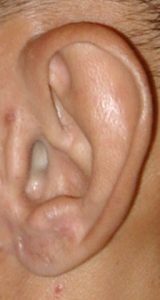
So why is ear cartilage more popular? Septal cartilage is much harder to harvest and would usually be executed in an operating theatre. Whereas the harvesting of an ear cartilage can be done in the clinic and is therefore cheaper. In some countries, only qualified surgeons may use the operating theatre. If the rhinoplasty is not being done by a qualified surgeon, ear cartilage is the only option.
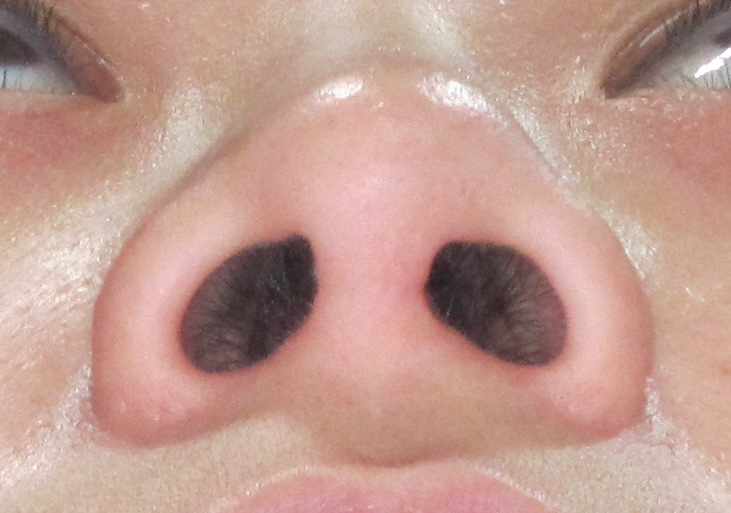
Endonasal or Open Rhinoplasty?
In endonasal rhinoplasty, the incisions are made inside the nostril. The incision of the open approach is shown in the photo.
Many patients fear an external incision. This makes advertising surgery without an incision a very successful strategy to get someone to walk through your door.
It is a mistake to conclude that any operation without an external incision is better than one with an incision, especially for rhinoplasty.
The external incision is under the nose and is barely visible once healed. This is a small price to pay for the advantages this approach has for certain types of surgery of the nasal tip.
The open approach gives good surgical access to the tip cartilages. The surgeon can see the delicate cartilages of the nasal tip and it is much easier to re-shape or reconstruct them. This means that more sophisticated reconstructions / re-shaping can be done accurately and this will translate into better cosmetic results.
An approach that used to be popular was inserting a silicone implant via a cut under the upper lip. People were attracted by the promise that there was no cuts on the nose and therefore is a very safe operation.
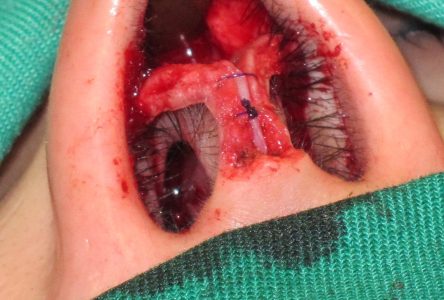
What most people don’t know is that tunnelling from under the upper lip onto the nose damages the supports of the nasal tip cartilages. Since the deformed structures are camouflaged by the rigid silicone implant, the patient doesn’t realise how much damage has been done. No incision does not always mean better.

Rhinoplasty
In many parts of the world, the aim is to get a natural looking nose. This means that when someone looks at your face, they will notice your eyes and not your nose. Your nose is not supposed to draw attention to itself.
A recent trend, especially among East and South East Asians, is the desire for an abnormally prominent, Pinocchio type of nasal tip. In the past this was achieved by inserting an L-shaped silicone implant via an endonasal incision. The prominent tip is the angle of the implant sticking out through skin.
Nowadays, some people do this by inserting a hard piece of plastic into the tip and cushion it with ear cartilage. This creates that prominent Pinocchio type tip. This operations sells well because it can be done with an endonasal approach. Unfortunately, we noticed that in many of such patients, it results in an abnormal, pinnochio type nasal tip.
For more information on a Comparison of the Aesthetic Facial Proportions of Southern Chinese and White women, follow the link to Dr Sim’s paper.
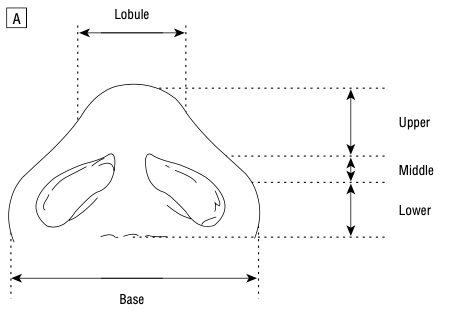
Nasal Tip Proportions
The nasal view of the nose has certain proportions depending on the ethnicity. East Asians tend to have nostrils that are more horizontal compared to White people. This proportions are important in Tip Plasty.
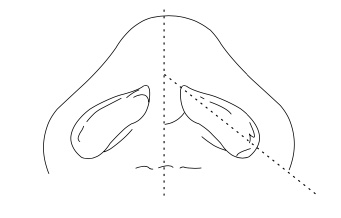
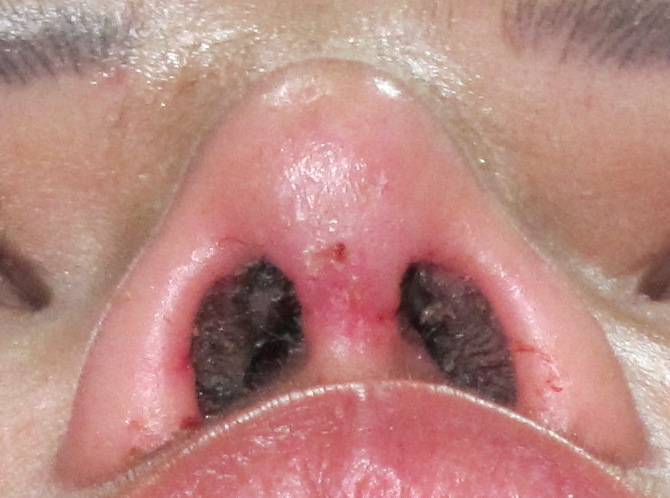
Many patients want the tip to be made more prominent. When the tip is raised, the shape / orientation of the the nostrils have to become less horizontal. We have some across patients whose tips are raised by the surgeon stuffing pieces of ear cartilage into the tip via an endonasal approach. This results in an abnormal large and disproportioned lobule, giving that pinnochio type look because the base looks the same but the lobule part has been abnormally expanded.
Using an external approach with proper tip refinement techniques would produce a better result. Hence, don’t be fooled into thinking that surgery without an incision is always a good thing.
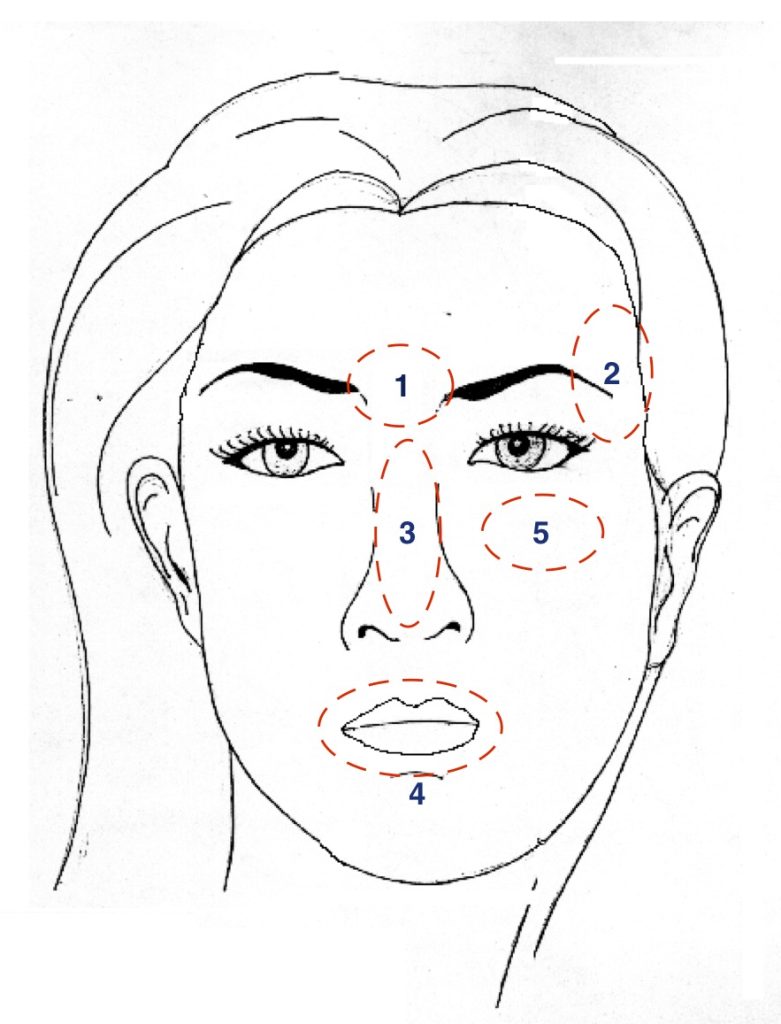
Liquid Rhinoplasty
The most popular rhinoplasty in the market today is the “liquid rhinoplasty”. It is the fancy name for injecting fillers into the nose bridge to make it more prominent. In this part of the world, most people are not born with prominent nose bridges and this procedure is vey popular. It is also the only rhinoplasty that can cause blindness. There are supposedly 5 danger zones of the face where injecting fillers may cause BLINDNESS:
- Glabella
- Temples
- Nose
- Around Lips (peri-oral)
- Below Eyes
Not everyone agrees that the area below the eye is dangerous. Some consider the laugh lines (nasolabial folds) to be danger areas. Here is a short YouTube video on this topic.
Other complications of Liquid Rhinoplasty
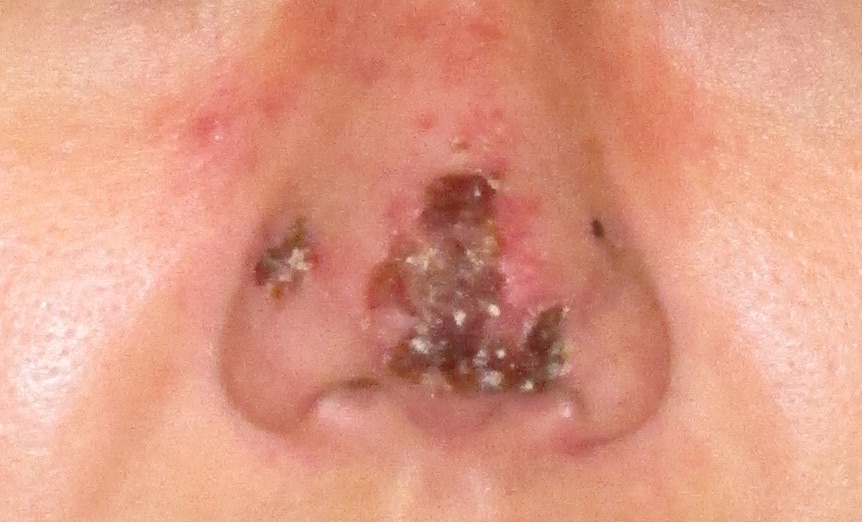
Injection into blood vessel
When the blood vessels gets blocked, the skin dies and falls off the tip of the nose.
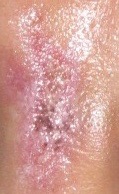
Scarring of skin over nose
The wound will eventually heal with a scar on the nose. This will require some sort of skin reconstruction.
ENT and Rhinoplasty
Rhinoplasty
There is no fixed definition of what a rhinoplasty exactly is. Many people use the term “rhinoplasty” when the surgery is done for purely cosmetic reasons.
Septoplasty
Septoplasty is surgery to fix a crooked nasal septum, usually to relieve a blocked nose. The septal deviation may be developmental or post traumatic.
Septorhinoplasty
Some noses have both internal and external deformities. Surgery to correct this is called Septorhinoplasty.
The terminology is more important to the insurance company than the patient. What is really important to the patient is: if a septoplasty is done when the patient actually needs a septo-rhinoplasty, the operation will probably fail to relieve the blocked nose. The best results are obtained when all the deformities are fixed during the first surgery. Revision, or re-do, cases are usually more difficult.
